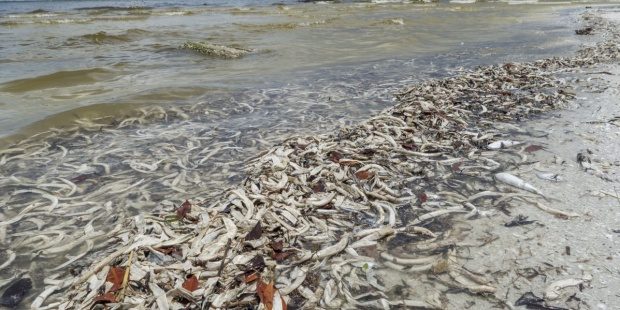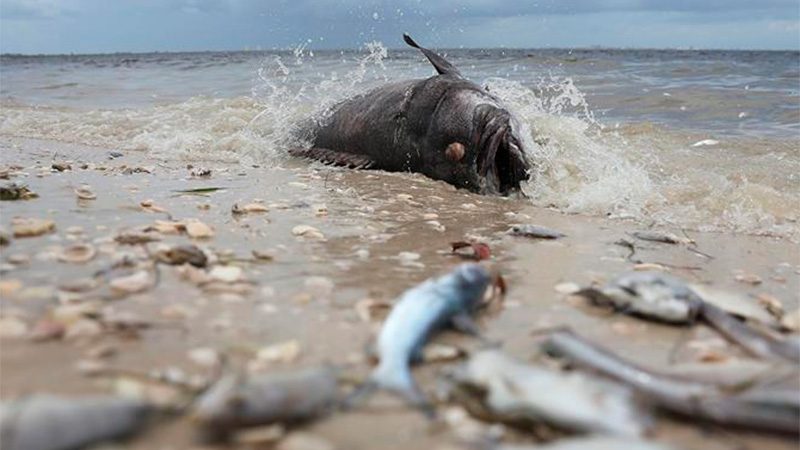In the Valdés Peninsula in Chubut, a high statistic of whale deaths has been recorded since last week. Specialists suspect that feeding is the key to the intoxication.
Although local authorities have denied it so far, it could be due to a phenomenon called “red tide“. Until last week, more than 70 specimens were found in the Valdés Peninsula region, and the number could continue to increase.
Whale deaths: what is red tide
While this phenomenon is not officially declared in Chubut this year, it occurred in previous seasons and could happen again.
 Red tide caused the death of many species.
Red tide caused the death of many species.
Red tide is a natural phenomenon that occurs in seas around the world. It is caused by a massive proliferation of some species of microscopic algae (microalgae) when certain environmental factors (such as temperature, light, pH, availability of certain nutrients, salinity, among others) become favorable for their multiplication.
Because microalgae have pigments, their accumulation on the sea surface can be visualized as reddish, brown, or greenish patches. This is what gave it its name.
Why does it affect whales?
“Whales are increasingly feeding in the area of the Valdés Peninsula and the whale’s food is feeding on this toxic algae, so there is a transfer of toxicity in the food chain,” said Valeria D´Agostino, a researcher at CONICET in the Center for the Study of Marine Systems.
The deaths of the whales could be related. They are carnivores, feeding on small organisms called zooplankton. “These zooplankton feed on phytoplankton, where the toxic algae are found,” the scientist explained to Rio Negro.
“So there is a transfer from the toxin producer to the whale’s prey and from the whale’s prey to the whale. Even seals and seabirds also show mortality because there is a transfer throughout the entire food chain,” she added.
Red tide: can it affect humans?
Concerning this phenomenon, the National Service for Agrifood Health and Quality (Senasa), through a statement at the beginning of summer, made a series of recommendations regarding red tide. To “prevent intoxication from consuming shellfish contaminated with these toxins.”
“Red tide represents a danger to human health since organisms such as bivalve or gastropod mollusks can accumulate toxins in their bodies by feeding on toxic microalgae, and by consuming them, people can become intoxicated,” they warned.
They also clarified that to determine if a shellfish contains toxins, an analysis must be carried out, which is only performed in laboratories specialized in this control by the national entity.
“If these contaminated shellfish are consumed, they can cause poisoning in people, the severity of which will depend on the type of toxin and the dose ingested,” they warned. “The toxins are not inactivated by cooking, adding vinegar or lemon, or by consuming alcohol. There are no antidotes,” they clarified.
 What is red tide.
What is red tide.
How to prevent intoxication, according to Senasa
- Do not collect shellfish and/or seafood on beaches for home consumption.
- Respect the provisions, ordinances, and public notices of bans on the extraction and consumption of shellfish.
- Do not acquire preparations made with seafood (canned, salads, paellas, etc.) from street vendors or establishments without food safety authorization.
- Do not buy fresh seafood “from the boat,” on breakwaters, or from unauthorized collectors.
- Do not buy shellfish without the corresponding health certificate issued by an official entity.
- Buy or consume seafood purchased only at fish markets, restaurants, or food establishments duly authorized.
Do you already know our YouTube channel? Subscribe!

